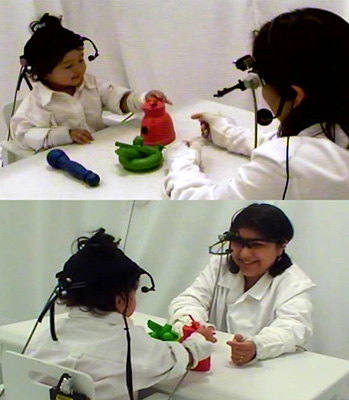Many of our tasks ask children to learn new words -- in games, on the computer, or by viewing slides. We do this to understand how learning works and how it can be made easier. We are also interested in real world, everyday learning in naturalistic settings.
In the past, we (and lots of other researchers) followed young children around with cameras and clipboards, trying to understand their every day learning experiences. But these techniques just allow us to see the child in the world, they don't show us the child's world in the sense of what the child sees. In very exciting new research, we are putting lightweight head-cameras on children, a first attempt to see the world as they do.
Below is a list of our current studies and the ages that researchers are seeking for participation. We hope you find a study that excites you and sends you eagerly to filling out our on-line particpation form.




